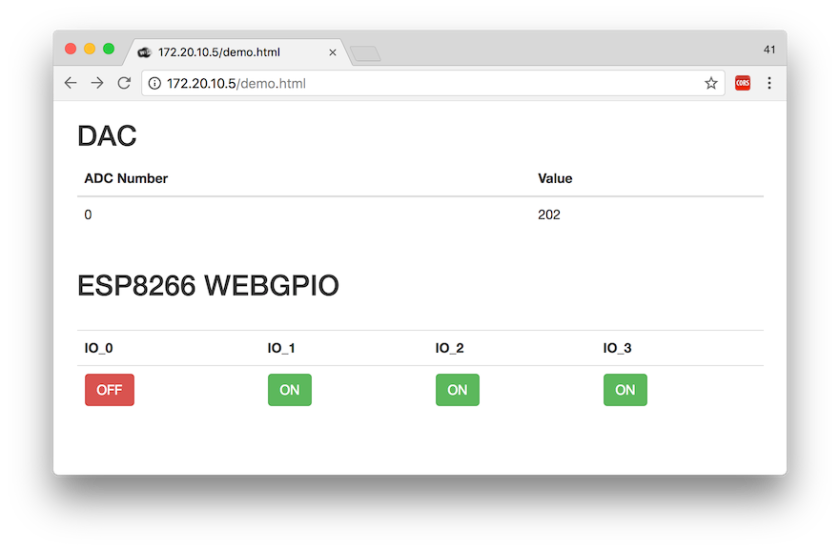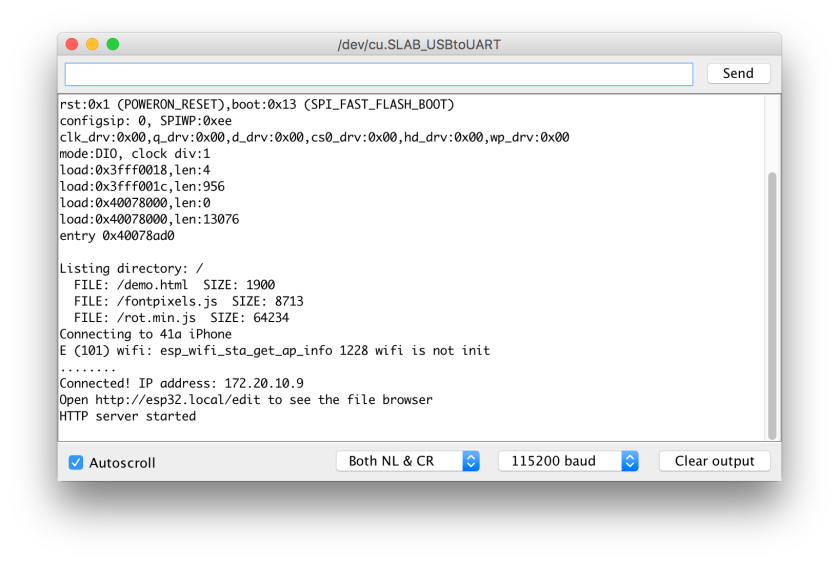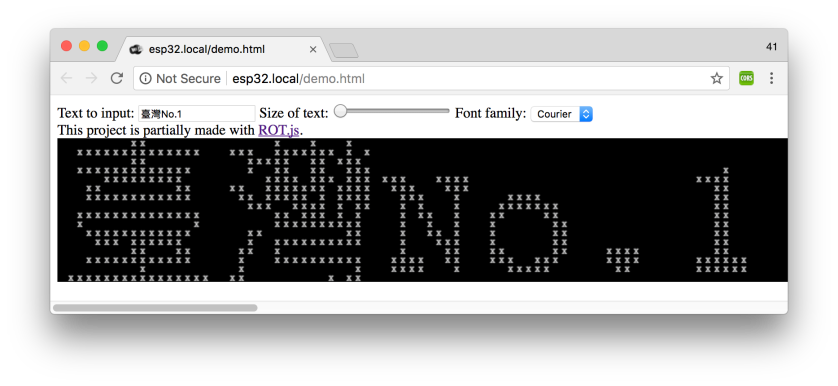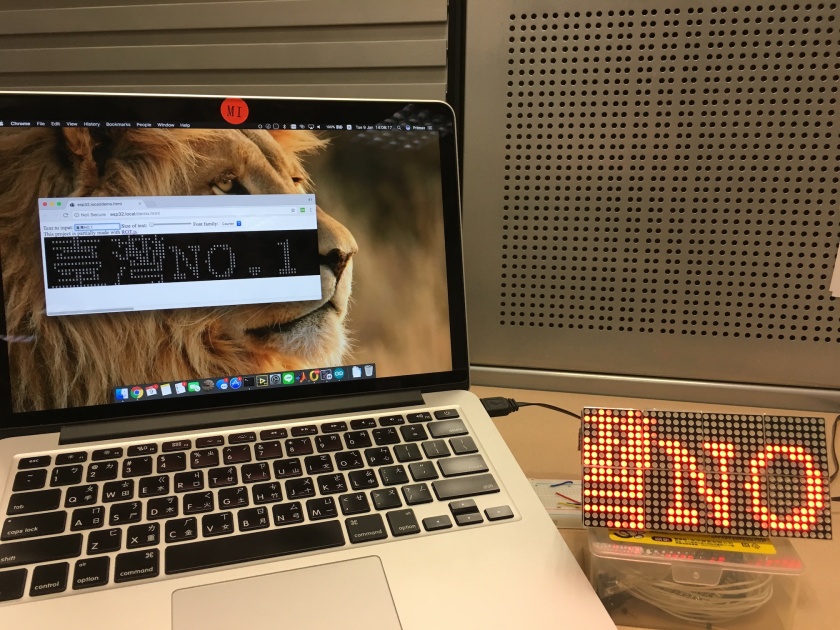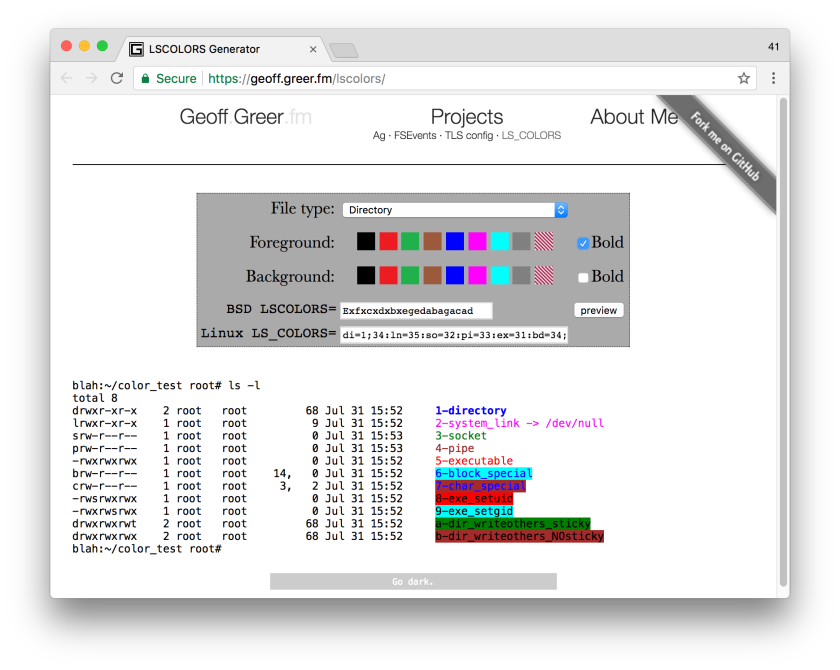Arduino plugin which packs sketch data folder into SPIFFS filesystem image,
and uploads the image to ESP32 flash memory.
Installation
- Make sure you use one of the supported versions of Arduino IDE and have ESP32 core installed.
- Download the tool archive from ESP32FS-v0.1.zip
- In your Arduino sketchbook directory, create tools directory if it doesn't exist yet.
- Unpack the tool into tools directory (the path will look like
<home_dir>/Arduino/tools/ESP32FS/tool/esp32fs.jar). - Restart Arduino IDE.
On the OS X create the tools directory in ~/Documents/Arduino/ and unpack the files there
Usage
- Open a sketch (or create a new one and save it).
- Go to sketch directory (choose Sketch > Show Sketch Folder).
- Create a directory named
dataand any files you want in the file system there. - Make sure you have selected a board, port, and closed Serial Monitor.
-
Select Tools > ESP32 Sketch Data Upload menu item. This should start uploading the files into ESP32 flash file system.
When done, IDE status bar will display SPIFFS Image Uploaded message. Might take a few minutes for large file system sizes.
Credits and license
- Copyright (c) 2015 Hristo Gochkov (hristo at espressif dot com)
- Licensed under GPL v2 (text)
- Maintained by Hristo Gochkov (hristo at espressif dot com)
Issues and suggestions
File issues here on github, or ask your questions on the esp32.com forum.

 
